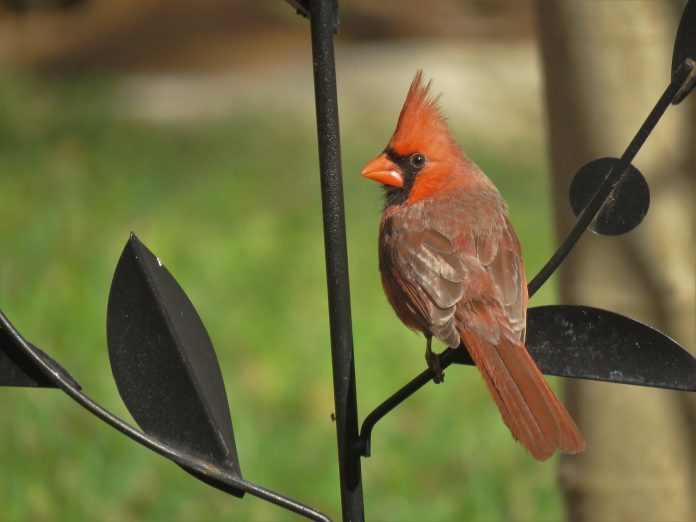I’m often asked when and how I developed my interest in nature. The “when” is easy.
For as long as I can remember, I’ve loved animals of all kinds. As soon as I learned to read, I’d spend hours with encyclopedias and any other books that included pictures and stories about animals. And like most kids who grew up in the 1950s and 60s, I loved dinosaurs.
I wish I still had my collection of hard rubber “terrible lizards.” I trace exactly how my childhood curiosity turned into an obsession to one Christmas when I was about seven years old. My parents bought me my first Golden Guide — Birds: A Guide to the Most Familiar American Birds.
I studied that book every day and probably memorized most of it. My goal became to see every one of the 112 species featured in the book. At the time, I had no mentors, and I had never heard of a “life list.”
Hummingbird
The first bird I remember identifying with my Golden Guide was a ruby-throated hummingbird in a neighbor’s flower bed back in rural southeastern Pennsylvania. Back then Golden Guides were perfect for kids and adults just getting into nature study.
Roger Tory Peterson’s Field Guide to Birds was a bit intimidating for those readers. Over the last 30 years, the number of field guides has mushroomed to the point of being unmanageable. Who needs multiple copies of field guides for every group of plants and animals?
A simple guide for kids and beginning adults followed by a more adult guide should suffice for most people as their interests broaden. Golden Guides, originally called Golden Nature Guides, were a series of 160-page pocket-sized books created by Western Publishing.
Each was written by an expert and illustrated with simple color plates that I found irresistible. The first titles included Birds (1949), Insects (1951), and Mammals (1955). In the 1960s and 1970s, the guides expanded to cover a wider range of topics such as Bicycling (1972), Casino Games (1973), and Wines (1973).
Still available
In 2001, St. Martin’s Press relaunched the Golden Guide series, so many titles are still available. In addition to Birds, my personal library of Golden Guides includes Gamebirds, Bird Life, Insects, Spiders and their Kin, Seashells of the World, Fishes, Reptiles and Amphibians, Snakes, Mammals, Bats of the World, Whales and Other Marine Mammals, Endangered Animals, Venomous Animals, Dinosaurs, Mushrooms and other Non-Flowering Plants, Flowers, Orchids, Trees, Weather, Stars, Planets, Ecology, Everglades, and Photography.
Originally priced at $1.25, Golden Guides, at $6.95 today, are still one of the best values in publishing.
My point in listing these titles is to show the diversity of inexpensive, easy-to-use Golden Guides. If you are just developing an interest in nature, these books will point you in the right direction, especially if you want them for the backyard or places close to home.
And if you’d like to spark a child’s interest in nature, these books will do the trick. They worked for me.
Specific titles
With summer almost upon us, let me recommend a few specific titles for specific situations. Butterflies and Moths will help you identify most of the common species in your backyard. It even includes color illustrations of many of the caterpillars of the 423 species included in the book.
I consider it the best of the Golden Guides. If you don’t mind getting a little wet and muddy, Pond Life is perfect for exploring ponds and other small wetlands. From aquatic plants to aquatic insects and other invertebrates, Pond Life will answer most of the common questions that arise.
And if you’re planning a trip to the beach this summer, don’t leave home without a copy of Seashore Life. From mole crabs and hermit crabs to seashells, dune vegetation and shorebirds, it’s the best little reference book to keep in your back pocket.













